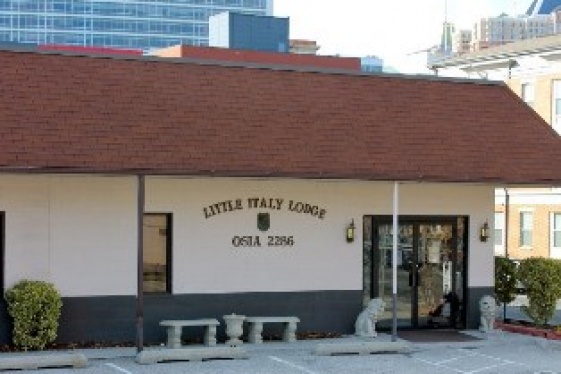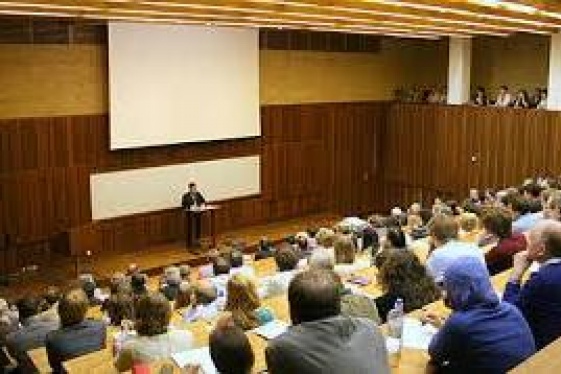

As we approached spring break, things started to change rapidly. In a week we were told that the University would close and we needed to teach remotely. Besides my own anxiety towards something I had never done before, the most important question for me was: how was I going to keep students interested and motivated when their lives were changing so much? Some students had lost their jobs, some of them could not pay rent and had to move out of their apartment, others left their dorms to return to live with their families. Emotions were running high and we all felt disoriented.
I was following the news with apprehension and talking to my family in Italy daily. I was very saddened to see what was happening to my country and to the spirit of my countrymen.
One of the courses I was supposed to deliver remotely here at the Portland State University was Italy through Cinema. The movies I had selected were all excellent movies, but usually left the viewer with sorrow and heaviness because they deal with difficult topics as war, organized crime, and migrants struggles.
The more I thought about the syllabus for the class, the more I felt that I had to change it. How could I have the students watch these movies focusing on so much suffering and struggles when they themselves were going through similar things? I imagined the students locked in their homes, with no place to go, no gym, no park, no coffee place, no friends. I also did not feel inclined to discuss those topics at length. My heart was aching for what Italy was going through, I felt close to my people and yet I was so far away. I wanted to send good, positive energy and wanted to help students be more optimistic about the country, even if the images we were seeing were those of desolation and death. I had to do something.
I decided to change the movies for more uplifting ones. In the section about “a difficult time in history” I chose the movie La vita è Bella instead of Rome Open City, to discuss family and relationships; I chose Bread and Tulips and The first beautiful thing instead of Bitter Rice; I chose Mafia Kills only in the Summer instead of I Cento Passi for a theme on organized crime; and I chose L’Orchestra di Piazza Vittorio instead of Terraferma to illustrate the migrants struggles. I kept The Best of Youth, a monumental film which should be shown to all students of Italian.
I then added “Mid-August Lunch” to discuss the importance of the elderly in Italian society. I really wanted to talk about the huge loss the country was experiencing as the elderly is group most affected by Covid-19. In fact, the students immediately related the movie to the current events while enjoying it for its lightness and depiction of Italian life style. Success!
Another change I implemented was starting the course with the film Wondrous Boccaccio. This was a very bold choice on my part for several reasons. Although directed by the famous Taviani brothers, the movie is not very popular among Americans. The movie is loosely based on the stories narrated in this masterpiece of Italian literature, The Decameron, yet to the people unfamiliar with the book the stories seem to have no unifying thread. In addition, because it is set in the 14th century, it is not a film that lends itself to understand contemporary Italian culture.
As I had hoped, the students immediately related to it. In their reflections the students described their current situation at the time of the Covid-19 as similar to the one of the 10 young Florentines who take refuge in the Tuscan countryside to escape the Black Death in Florence. But the movie quickly became personal and this was the unexpected outcome. The students drew amazing parallelisms between their situation in the United States in 2020 with the one of the young Florentines in the 1300s. It became obvious that we not only reacted similarly to two similar situations 700 years apart but also the strategies employed to fight sadness and fear were also similar, taking refuge in friendship, music, nature and art and family. In fact, to alleviate anxiety, a lot of art and music was produced during the two months of lockdown, a proof that they are the beautiful and important things which help us cope with inevitable pain and suffering in life.
Below are some excerpts of the students’ reflections on the Taviani Brothers’ movie
- It celebrates the importance of community in periods of crisis.
- The message of this movie is that the greatest medicine is companionship. In times of the plague and COVID-19 where people are forced into isolation and social distancing, having a community of people to laugh with, tell stories to, and spend time with is very important for our mental health and sense of normalcy in a rather dark time. I agree with this message, I have heard many peers and classmates talk about how keeping in contact with friends and video chatting is helping keep them sane during this period of isolation. Even class meetings on Zoom are very healing and bring a sense of normalcy and community into our lives.
- The opening scenes showing the public panic and distancing between the people of Florence remind me deeply of going outside today. The social isolation that the 10 face in the home outside of the city reminds me of my time here at home with just my family to keep me company. There are times of entertainment and laughter as well as fear and boredom.
- Throughout the film I was thinking about how it was relevant to the times we are living in now with COVID-19. I thought of the idea of isolation from society and how they had the means to do so in an era vastly different than our own yet we too have different means of isolation. I couldn’t help but fear the extremities of the Black Plague and reflect them upon these current times hoping society does not decline to such.
- I think that the message of this movie is the importance of solidarity and community in times of crisis. I completely agree with it and I think that (especially now), it is a good reminder about the importance of connection.
- Although the Black Plague and COVID-19 are extremely different situations and magnitudes, the situation in the movie did remind me of current events. Especially in the beginning, with everyone locked in their homes and scurrying out for necessities. I think that people here in the US, and I’m sure in Italy too, are feeling the effects of the stay-at-home orders in place in much of the world, and could use one of those getaways in the Italian countryside themselves
The class is still ongoing, we have 3 more weeks to go. We are still in lockdown mode and we keep meeting remotely. As our cinematic exploration of Italian culture continues, the students, immersed in the beautiful images depicted in these Italian movies, do not talk much about the pandemic anymore but keep dreaming of Italy and traveling there soon.
You may be interested
-
2015 scholarship competition
The La Famiglia Scholarship committee is pleased to announce the financial aid competition...
-
Emanuele: cervello d'Italia al Mit di Boston
Si chiama Emanuele Ceccarelli lo studente del liceo Galvani di Bologna unico italiano amme...
-
Italian Americans media and beyond: between...
The Department of Italian invites you to a lecture by Fulvio S. Orsitto who is an Associat...
-
Italian world language teacher 2015-2016
FRAMINGHAM PUBLIC SCHOOLS - JOB DESCRIPTION TITLE: World Language Teacher - Italian...
-
New York Italians Movie Night: "C'eravamo ta...
Dear Friends, New York Italians in collaboration with Fordham University, Department...
-
'A League of Their Own' director Marshall dea...
Actress and director Penny Marshall, whose love of sports made her a regular in the Los An...
-
'Avengers: Infinity War' Directors Inducted I...
The Russo Brothers were a pair of the Marvel Cinematic Universe's best directors even prio...









